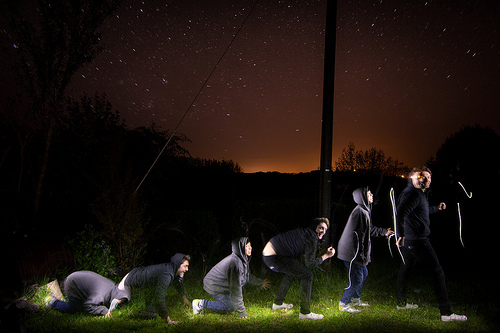[Editor’s Note: This is a guest post by Brydon Gilliss Follow @brydon founded the shared office space ThreeFortyNine in Guelph where he plays with Startupify.Me, Ontario Startup Train and 20 Skaters. A serial entrepreneur and fervent community builder, he’s also busy organizing a train-full of founders for this summer’s International Startup Festival.]
The moments we choose to celebrate say a lot about what we consider important. They’re a proxy for the metrics we value, because we’re signalling to others by their very celebration. And yet, I’ve always been of the belief that startups tend to celebrate the wrong things.
If that’s true, what signals are we sending? We celebrate product launches, government grant acceptance, fundraising, winning pitch contests, and so on. Too often, these are the vanity metrics of our startup ecosystem.
Of course, some of these events are worthy of celebration. A grant lets us live to fight another day; a winning pitch might drive sales or help us to hire a key employee. But they would be way down on my list, personally, if my goal was to build a real business. Let’s stop concentrating on celebrating events like taking on debt or winning what is often little more than a beauty contest—and focus instead on what we should celebrate but rarely do.
At ThreeFortyNine, we celebrate the achievements that matter to the business model. Consider, for example, the first time you sell something to a complete stranger. That’s worth celebrating because it’s the first sign your business might have legs of its own. In our Founder’s Club events, we celebrate selling our first train tickets to strangers; Foldigo celebrated its first-ever sale to a stranger. Our plan is to build up this list and move it into our monthly socials.
We’re building our Startupify.Me program around the concept that talented developers stepping into startup life need options. Incubators, accelerators and government grant programs funnel them into a single, traditional path thereby discouraging experimentation. We want our cohort to have the option to create a lifestyle business or a even a small, local business—if they choose. Of course, any of them can still try and swing for the fences, but they have all options in front of them.
“We didn’t get to where we are today thanks to policy makers – but thanks to the appetite for risks and errors of a certain class of people we need to encourage, protect, and respect” – Nassim Taleb
Only in recent years have books like Lean Analytics begun to draw out the real risks of obsessing over feel-good data that does little for the business—so-called “vanity metrics”. There’s a very real danger if a young entrepreneur believes that success comes in the form of taking on debt, winning a pitch contest and launching a product. Those may be required for some businesses but they shouldn’t be misconstrued as success.
Part of the challenge here is the proliferation of what I call success turnstiles in our ecosystem. These are entities whose prime motivation is to funnel as many businesses as possible through their turnstile. It’s a pure numbers game for them as they chase their success metrics. These entities tend to be government funded and these success metrics are defined by bureaucrats and can be tracked up the organizational hierarchy to a speech-writer’s desk.
We need to lead real conversations about what success is because it comes in many shapes and forms. Advocates of this more mindful form of celebration include Jason Cohen imploring founders to get 150 customers instead of 1000 fans and Rob Walling helping startups to start, and stay, small.
Here’s an initial list of milestones and accomplishments worth celebrating to get you started.
- Performed 30 interviews with real potential users.
- First customer acquired.
- First customer acquired and you have no idea where they came from.
- Covering your monthly personal costs.
- Identifying the first product feature a potential customer will pay cash for.
Which vanity metrics need to stop being celebrated? What do we need to celebrate more?



